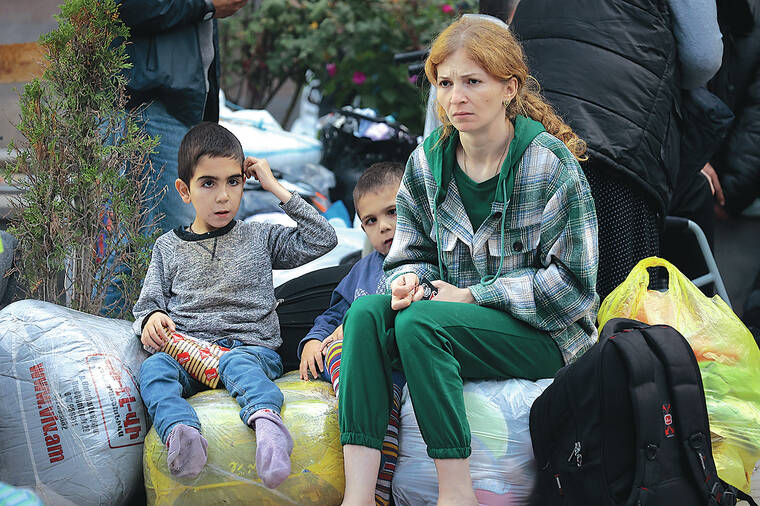Why this week’s mass exodus from embattled Nagorno-Karabakh reflects decades of animosity
TALLINN, Estonia — The exodus of ethnic Armenians this week from the region known as Nagorno-Karabakh has been a vivid and shocking tableau of fear and misery. Roads are jammed with cars lumbering with heavy loads, waiting for hours in traffic jams. People sit amid mounds of hastily packed luggage.
As of Thursday, more than 78,300 people had left the breakaway region for Armenia. That’s a huge number — more than half of the population of the region that is located entirely within Azerbaijan.
Still, it’s not the largest displacement of civilians in three decades of conflict between Armenia and Azerbaijan following the 1991 collapse of the Soviet Union.
After ethnic Armenian forces secured control of Nagorno-Karabakh and surrounding territories in 1994, refugee organizations estimated that some 900,000 people had fled to Azerbaijan and 300,000 to Armenia.
When war broke out again in 2020 and Azerbaijan seized more territory, the United Nations High Commissioner for Refugees said 90,000 had gone to Armenia and 40,000 to Azerbaijan.
What is the region?
Nagorno-Karabakh, with a population of about 120,000, is a mountainous, ethnic Armenian region inside Azerbaijan in the southern Caucasus Mountains.
When both Azerbaijan and Armenia were part of the Soviet Union, the region was designated as an autonomous republic, but as Moscow’s central control of far-flung regions deteriorated, a movement arose in Nagorno-Karabakh for incorporation into Armenia.
Tensions burst into violence in 1988 when more than 30 — some say as many as 200 — ethnic Armenians were killed in a pogrom in the Azerbaijani city of Sumgait. Armenians fled, as did many ethnic Azeris who lived in Armenia. When a full-scale war broke out, the numbers soared. That first war lasted until 1994.
Azerbaijan regained control of parts of Nagorno-Karabakh and large swaths of adjacent territory held by Armenians in a six-week war in 2020, driving out tens of thousands of Armenians that the government in Baku declared to have settled illegally.
What happened in recent days?
Last week, Azerbaijan launched a blitz that forced the capitulation of Nagorno-Karabakh’s separatist forces and government. On Thursday, the separatist authorities agreed to disband by the end of this year.
The events put the region’s ethnic Armenians on the move out of the territory.
Nagorno-Karabakh and the territory around it have deep cultural and religious significance for Christian Armenians and predominantly Muslim Azeris, and each group denounces the other for alleged efforts to destroy or desecrate monuments and relics.
Armenians were deeply angered by recent video that purportedly showed an Azerbaijani soldier firing at a monastery in the region. Azeris have seethed with resentment at Armenians’ wholesale pillaging of the once-sizable city of Aghdam and the use of its mosque as a cattle barn.


